“I thought you'd be hungry, maybe.” La piscine [The Swimming Pool] (Jacques Deray, 1969)
Jul
20

Marianne (Romy Schneider) and Harry (Maurice Ronet) shopping. Note the plethora of atypical-for-France ingredients, and how the packaging hasn't changed up to today. DP: Jean-Jacques Tarbès.
Shopping for food*
Schneider and Ronet's characters go get their groceries in a tiny, surprisingly well-stocked-with-Asian-food-items French corner shop, ánd manage to find all the ingredients needed. One rookie mistake: Uncle Ben's. Of all the rice in the world…
* the Bales 2025 Film Challenge for July is, for unknown reasons, mostly not date-related and follows some sort of vacation narrative.
France
“It would be thrilling if you were willing,
and if it can never be, pity me,
for you were born to be kissed,
I can’t resist, you are temptation,
and I am yours!” Estate violenta [Violent Summer] (Valerio Zurlini, 1959)
Jul
19
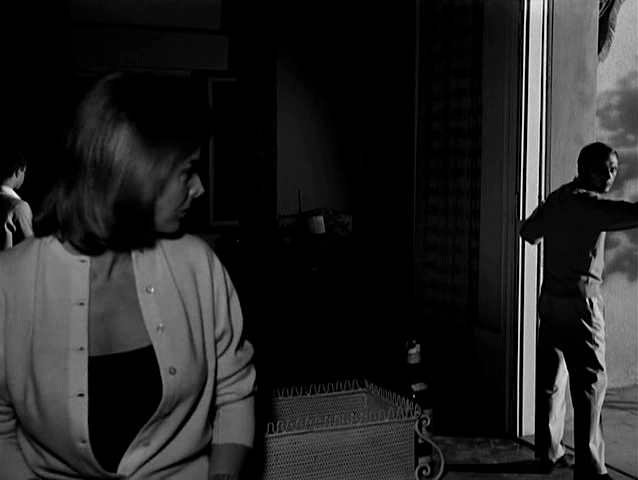
Roberta (Eleonora Rossi Drago) and Carlo (Jean-Louis Trintignant). DP: Tino Santoni.
Characters go on a date, or fall in love*
– Nacio Herb Brown & Arthur Freed, Temptation (1933)
On a beautiful summer day in Rimini, Carlo, the handsome son from a bourgeois home, saves a little girl and becomes infatuated with the girl's mother, a young widow years his senior. Set in July 1943, the events in the outer world (poss. spoilers) and the fate of the two uneven lovers slowly come to their logical conclusion.
* the Bales 2025 Film Challenge for July is, for unknown reasons, mostly not date-related and follows some sort of vacation narrative.
“I even tried not to think. I was face-to-face alone with the sea, far from cruises and beaches, fulfilling a childhood dream put off year after year. I lost myself completely in the play of shadow and light, sinking into a lethargy heightened by the water. That state of passivity, of complete availability, promised to last much longer than the euphoria of one’s first summer dip into the ocean. I could easily see myself spending a whole month this summer this way.” La collectionneuse [The Collector] (Éric Rohmer, 1967)
Jul
18
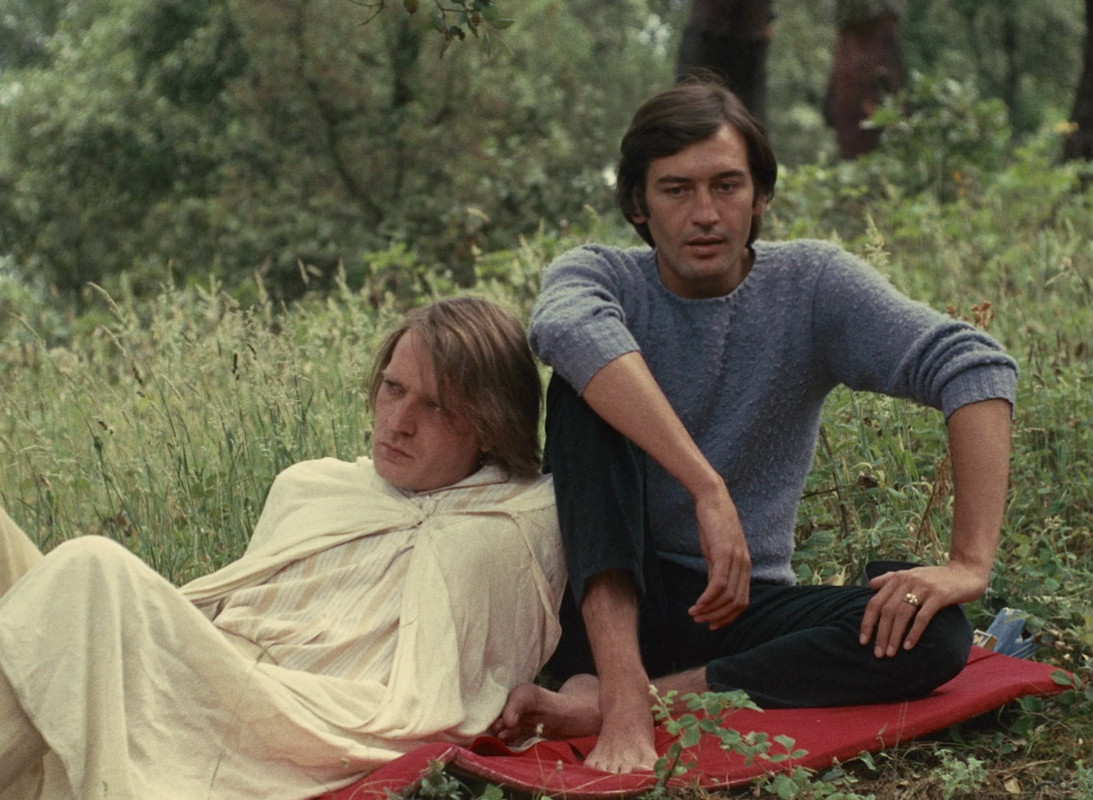
Daniel (Daniel Pommereulle), wrapped in bedsheets, and Adrien (Patrick Bauchau) rest in the grass. The colour of summer is courtesy of the master, DP Néstor Almendros (via).
Someone's all bundled up*. No list of summer films is complete without Éric Rohmer.
– Adrien
An art dealer and his writer friend plan to spend the summer together in a villa on the Côte d'Azur. A young woman, a collector of sorts, disrupts their retreat.
* the Bales 2025 Film Challenge for July is, for unknown reasons, mostly not date-related and follows some sort of vacation narrative.
“I treasure some kinds of old Thai disaster movies. Many of such tell a forbidden love story between a man and a woman that the mother earth destroyed them. Similarly, Blissfully Yours contains innocent narrative and simple characters. The settings are open landscapes and the disaster plot is there, except that it is transformed into another kind of disaster.” สุดเสน่หา [Sud sanaeha / Blissfully Yours] (Apichatpong Weerasethakul, 2002)
Jul
17
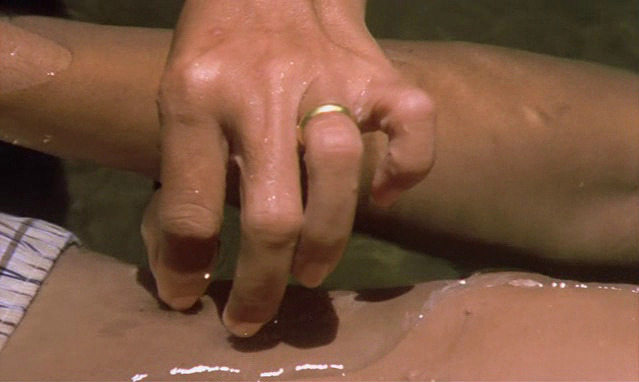
A hand picking skin in the water (via). DP: Sayombhu Mukdeeprom.
Someone with sunburn, or a skin condition*
– A.W., via
Min and Roong cherish their love among the uncertainty of his residence status. A old woman guards them, and soothes Min's blistered skin.
* the Bales 2025 Film Challenge for July is, for unknown reasons, mostly not date-related and follows some sort of vacation narrative.
“Everything's crashing here.”L'eclisse [The Eclipse] (Michelangelo Antonioni, 1962)
Jul
10
Mon

Vittoria (Monica Vitti, bottom left) at the Borsa – the Rome Stock Exchange. A clock top-right indicates it's Monday, July 10, 12:31 pm.. DP: Gianni Di Venanzo.
– Vittoria's mother
La dame dans l'auto avec des lunettes et un fusil [The Lady in the Car with Glasses and a Gun] (Anatole Litvak, 1970)
Jul
10
Vendredi
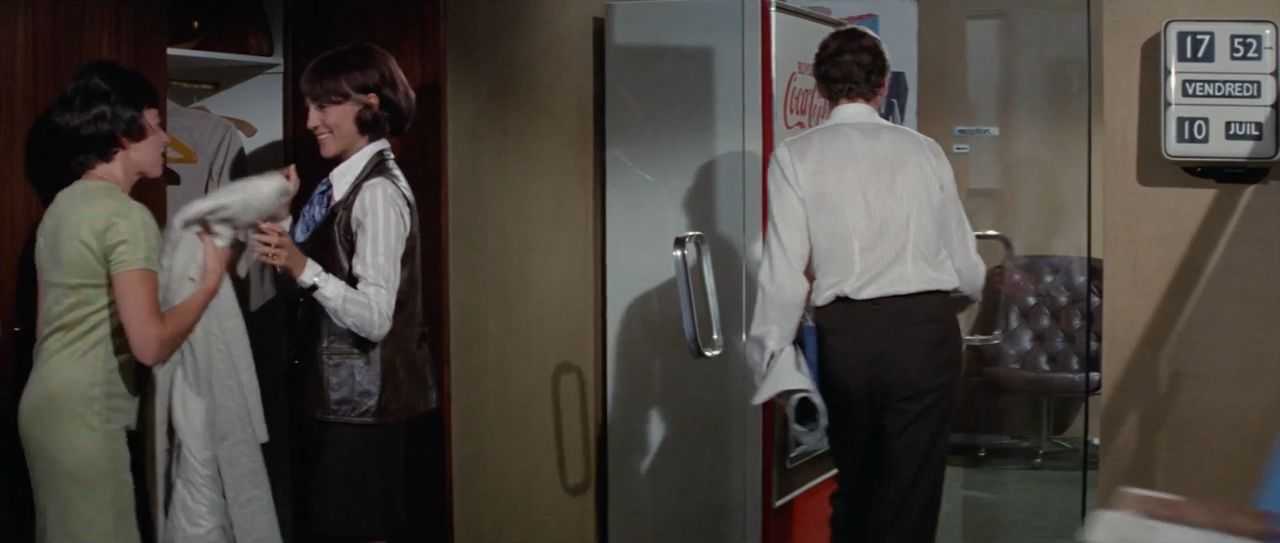
A man with a lot of swagger and rolled up blueprints is about to enter a room with a prominent Coca-Cola machine and a jazzy leather swivel chair on display. An electronic flip clock tells the time and date. It's 17:52. DP: Claude Renoir.
“Mr. Hulot is off for a week by the sea. Take a seat behind his camera, and you can spend it with him. Don't look for a plot, for a holiday is meant purely for fun, and if you look for it, you will find more fun in ordinary life than in fiction.” Les vacances de Monsieur Hulot [Monsieur Hulot's Holiday] (Jacques Tati, 1953)
Jul
7
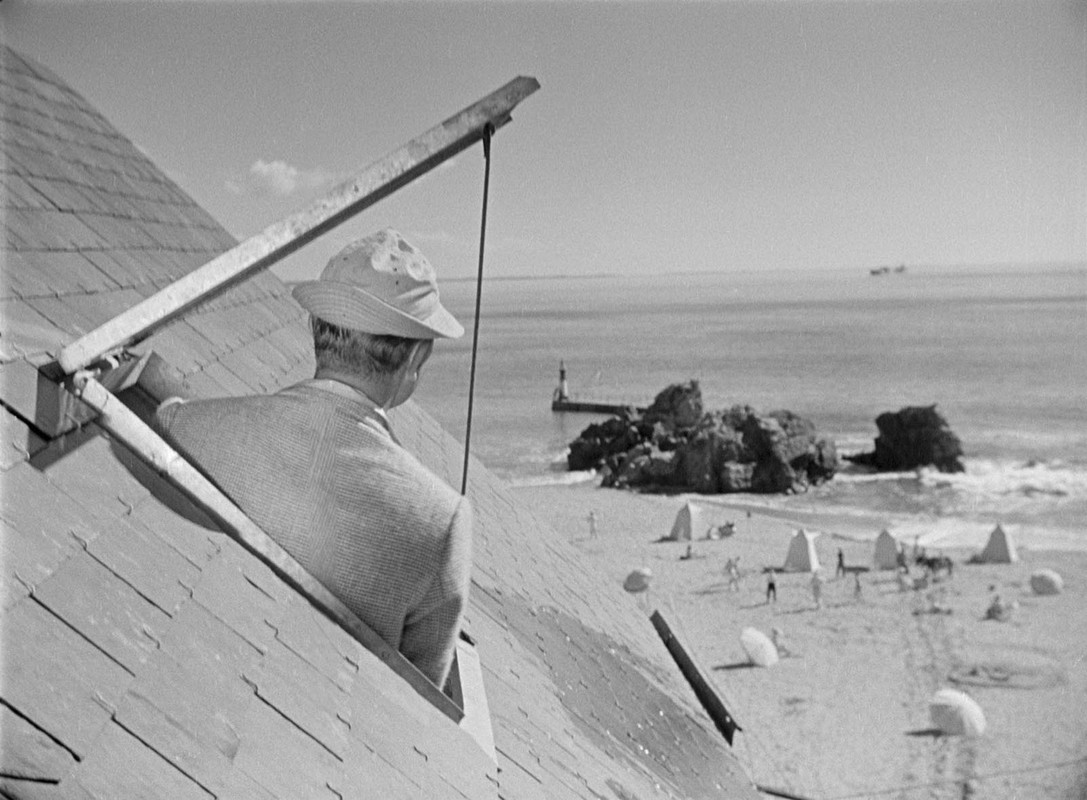
Mr Hulot's view from his hotel room. DPs: Jacques Mercanton & Jean Mousselle.
A film with people at, or taking place in, a hotel*
– opening lines
Located in the real-world Hôtel de la Plage in Saint-Marc-sur-Mer, Mr Hulot lovingly bumbles his way into your heart.
* the Bales 2025 Film Challenge for July is, for unknown reasons, mostly not date-related and follows some sort of vacation narrative.
“It appears obvious that the territory is the sum of all the maps, the result of an infinite addition. Or a contrary, the territory is what is left when we remove all the sets of lines, drawings, traces and colors which are covering it. Its existence becomes doubtful.” Zig-Zag – le jeu de l'oie (Une fiction didactique à propos de la cartographie) [Snakes and Ladders] (Raúl Ruiz, 1980)
Jul
5

An anthropomorphic map with contour lines sketching out a man's head (via). DP: Alain Montrobert.
Traveling to my vacation destination, a map or globe*
– H., via
A man, H., joins two others playing jeu de l'oie (Game of the Goose), a board game associated with labyrinths and pilgrimage. While the three play, the game opens up maps and new roads to explore.
Following my own Bales' rules, I cannot pick a title twice. See Zig-Zag as an avatar of Raúl Ruiz's O Território [The Territory] from 1981.
* the Bales 2025 Film Challenge for July is, for unknown reasons, mostly not date-related and follows some sort of vacation narrative.
“Don't think too much, it could affect your health, Gabrielle.”Le démon dans l'île [Demon Is on the Island / Demon of the Island] (Francis Leroi, 1983)
Jun
28
1947
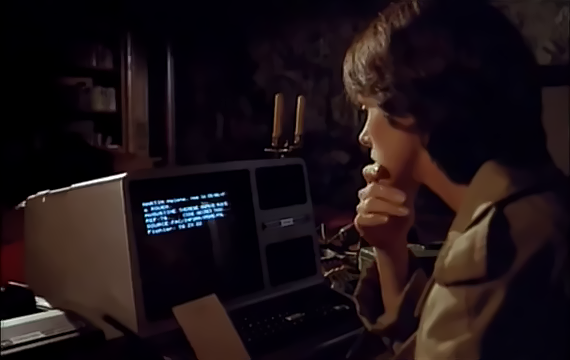
Dr. Gabrielle Martin (Anny Duperey) reads her digital patient file. It mentions her day of birth, June 28, 1947. DP: Jacques Assuérus.
– Dr. Marshall
“You're a foreigner and you're lost.”L'immortelle (Alain Robbe-Grillet, 1963)
Jun
23
Sat
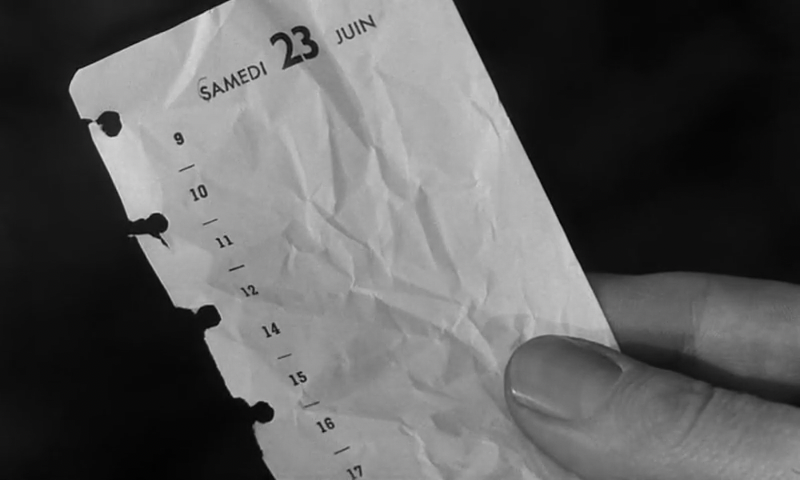
A man's hand holds a crumbled up diary page for Saturday June 23. There are no calendar entries. DP: Maurice Barry.